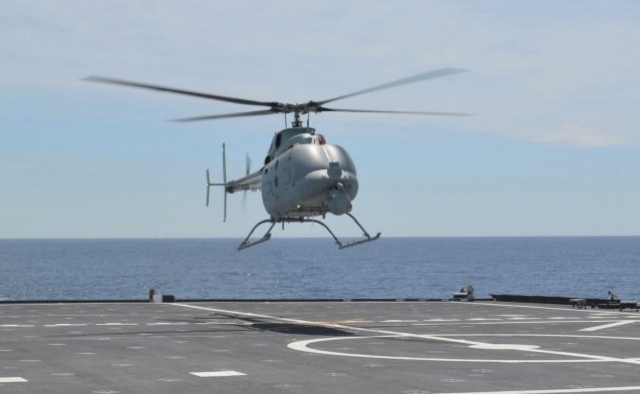The US Navy’s (USN’s) MQ-8C Fire Scout unmanned helicopter programme is scheduled to begin its initial operational test and evaluation on 16 April, according to Captain Jeff Dodge, head of US Naval Air Systems Command’s office for Multi-Mission Tactical Unmanned Aerial Systems (PMA-266).
An initial operational capability for the MC-8C is expected by the end of 2018, Capt Dodge told reporters on 9 April at the annual Navy League Sea-Air-Space exposition.
PMA-266 is now supporting the USN’s Littoral Combat Ship (LCS) programme with older-configuration MQ-8B Fire Scouts – based on a smaller Schweizer 333 helicopter – but production on that variant has ended. The service is now about halfway through production of the MQ-8C, averaging about 4-5 aircraft annually.
The C-model system is based on a Bell 407 that is a larger and more powerful air vehicle, offering improvements in range, endurance, and payload.
MQ-C can fly for 11.5 hours because the Bell 407’s passenger/cargo area was filled with fuel tanks for the Fire Scout programme. Still, the larger platform presents some challenges when using it from smaller ships such as the LCS, Capt Dodge noted.
The LCS’ limited space also impacts decisions about arming the Fire Scout. A weapons capability could emerge around 2023 and officials are considering a seven-tube APKWS launcher for the MQ-8C, but the LCS has limited magazine space and the navy is still determining a proper balance between arming the ship’s own weapons and its aircraft’s weapons, Capt Dodge said.
Fire Scout has, however, been tested as a targeting asset for the LCS or for its organic Sikorsky MH-60R Seahawk helicopters.
Source: Jane’s 360

